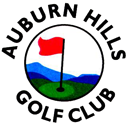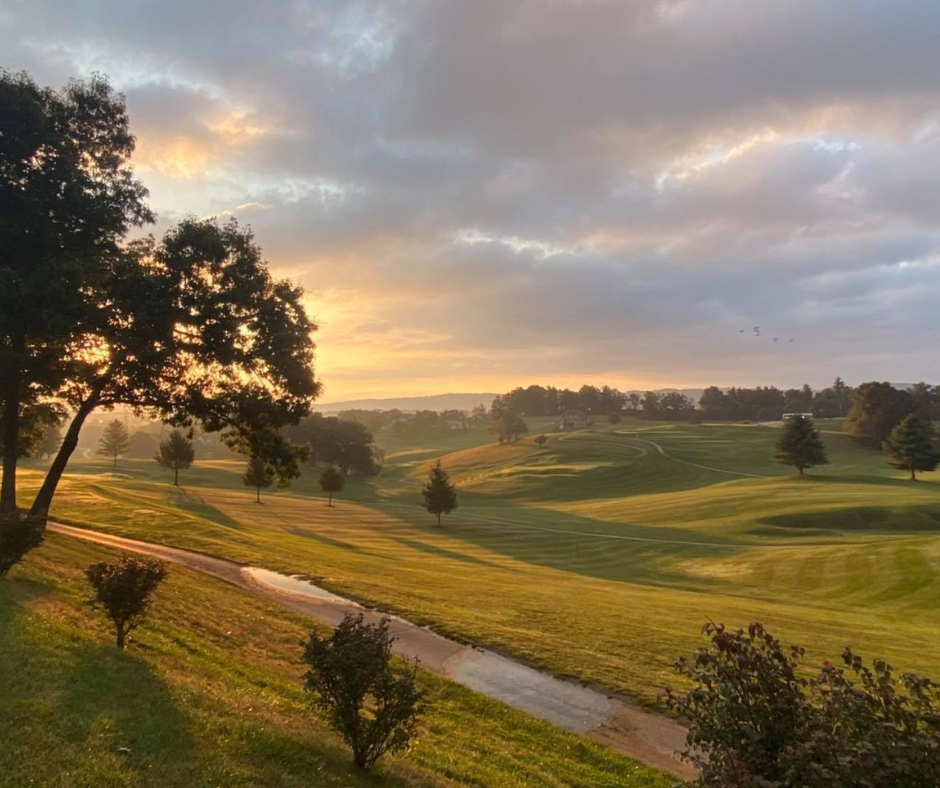
At Auburn Hills Golf Club in Riner, VA, it’s not just about distance—it’s about precision. While being a long hitter is certainly an asset, accurate tee shots and approach shots will often yield better results on our outstanding course. With dramatic elevation changes of over 100 feet, you’ll experience the excitement of driving from elevated tees to scenic fairways below.
The rolling terrain, large undulating greens, and strategically placed bunkers create a dynamic and challenging golfing experience that will keep you engaged throughout your round.
Our course, designed by the renowned architect Algie Pulley in 1999, showcases his expertise, with other notable courses like Chardonnay Golf Club in Napa, CA, Apple Mountain Golf Club in Camino, CA, and Royal Virginia Golf Club in Hadensville, VA, under his belt.
The opening hole at Auburn Hills sets the tone for the round ahead. It’s a 369-yard par-4, playing 293 yards from the forward tees, with a generous fairway that offers a smooth start to your round.
For the first three holes, the layout is fairly open, allowing you to ease into the game. After that, the course becomes more tree-lined, offering a great opportunity to test your shot-making skills. The 8th through 12th holes open up again, providing exciting challenges.
For example, the 8th hole, a par-4 playing 367 yards from the tips and 237 yards from the forward tees, features a slight dogleg to the right. After teeing off from an elevated box, you’ll hit to a fairway 80 feet below before climbing slightly uphill to a heart-shaped green, protected by bunkers on both sides and at the back.
As you move through the back nine, you’ll encounter several risk-and-reward holes—it’s up to you whether to play it safe or take on the challenge. The course is designed to keep you thinking and to test your strategic play from start to finish.

A great example of the course’s challenge and charm is No. 13, a par-4 that measures 306 yards from the back tees and 215 yards from the forward tees—a favorite among long hitters. From an elevated tee box 100 feet above the fairway, you’ll drive down to an area lined with trees. Many golfers try to clear the corner of this short dogleg left, and with the elevation change, it may feel like a 200-yard shot. Depending on your strategy, you might use anything from a 5-iron to a driver. If you decide to lay up, aim for an area 80 to 100 yards short of the green.
One of the most popular holes on the course is the 17th, a par-3 that plays 190 yards from the back tees and 111 yards from the forward tees. From the tee, you’re positioned 50 to 60 feet above the green, needing to hit over two large ponds that sit in front of the green. The target is the largest green on the course, but don’t be too short—especially if the wind is blowing, as this can be one of the toughest holes. Selecting the right club is essential, as hitting long could send you into the massive bunkers guarding the back of the green.
To close your round, you’ll play a short but strategic par-5, 516 yards from the back tees and 431 yards from the front. It’s a slight dogleg to the right, reachable for longer hitters with a strong, precise drive. However, be cautious of the bunker in front of the green and water on the right.
With four sets of tees ranging from 4,807 to 6,534 yards, golfers of all skill levels—men, women, juniors, and seniors—can enjoy their round.
Tee Set Yardages and Ratings:
- Blue Tees: 6,454 yards, rating 70.9, slope 129
- White Tees: 6,019 yards, rating 69.0, slope 125
- Gold Tees: 5,596 yards, rating 67.0, slope 118
- Red Tees: 4,788 yards, rating 67.1, slope 118

